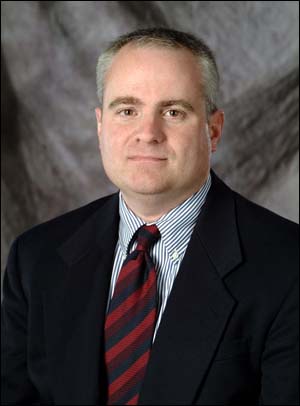Marketing professor honored by top research journal
Monday, February 5, 2007

Retailers who want to maximize success need to do more than satisfy their customers; they need to get their customers to recommend them to others actively. But how do you get customers to do that?
Answering such practical questions is one of the key reasons Dr. Tom Brown, a marketing professor at the Spears School of Business at Oklahoma State University, is getting special attention.
Brown, Ardmore Professor of Business Administration, and his research colleagues have become “regulars” in major academic research publications such as the Journal of the Academy of Marketing Science. Because their research findings offered a “clear and testable perspective” likely to be cited by other researchers for years to come, a panel at the journal has chosen Brown and company for the publication’s highest honor, the Sheth Foundation Award for the best article published during 2005.
“It is certainly reward enough to get your research published in a strong journal in the first place, but to receive the Sheth Award really validates the many hours of work that went into the project,” said Brown, who has been receiving some “validation” from the Spears School as well, which has awarded him its Richard W. Poole research award for two years in a row.
The Sheth and the Poole awards include cash rewards, and Spears School Dean Sara M. Freedman supports as “extremely important” the monetary aspects of such honors.
“You really cannot put a dollar value on the national exposure and recognition the publication of solid research projects like Tom’s attracts to the Spears School and OSU. It’s enormous, so we need to reward this kind of achievement any way we can,” Freedman said.
As for Brown, projects like the one he conducted with past and current customers of a car dealership in Dallas are exciting work, and he’s glad to partner with research colleagues Thomas E. Barry and Richard Gunst at Southern Methodist University and Peter Dacin at Queens University to make them happen.
Like most research, customer responses at the car dealership answered some questions for Brown and prompted additional reasons for further research.
In this case, he found several variables for prompting customers to spread positive word-of-mouth about a retailer, including satisfaction with the retailer, commitment to an ongoing relationship, and even whether the customer thinks of himself in the same terms he thinks of the retailer.
“What we learned was that, without a committed relationship between the dealer and the consumer, it was a customer’s level of satisfaction with the service that decided whether or not they were willing to promote the dealership by word-of-mouth,” Brown said. “When customers begin to feel a sense of commitment to the dealership, we believe that positive word-of-mouth will continue, even when satisfaction with the retailer dips, at least for the short run.”
Still open to further research are questions about consumers and how they may use word-of-mouth recommendations about the dealership as a means of expressing themselves or telling others about themselves.
“For example, while an individual might not want to come right out and tell someone ‘I’m wealthy enough to drive expensive sports cars,’ they may find it perfectly acceptable to comment ‘If you’re looking for a new car, I’ve had good luck with the ABC dealership,’” Brown said.
How closely do you identify yourself with particular retailers? What are the benefits of that relationship for you and the retailer? Brown and his colleagues may soon have a direct answer to these questions and more.
For more details on the findings of Brown’s research, the article title is “Spreading the Word: Investigating antecedents of Consumers’ Positive Word-of-Mouth Intentions and Behaviors in a Retailing Context” published in the Journal of the Academy of Marketing Science, spring 2005.
